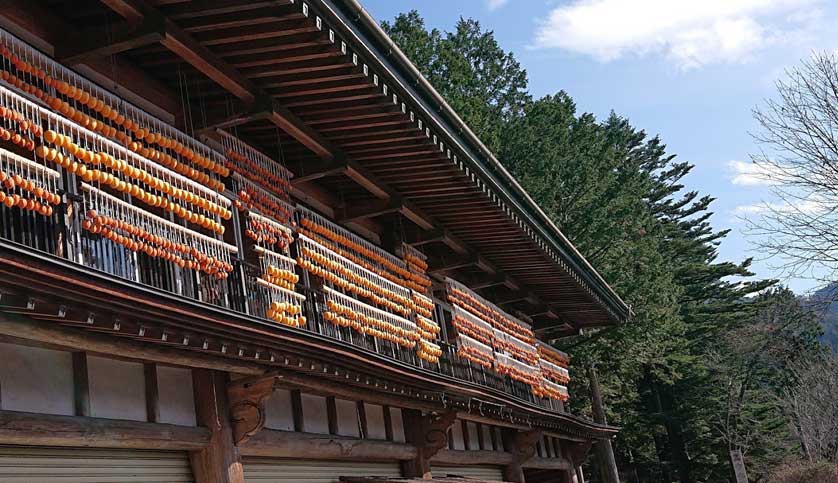One of the pleasures of exploring the backcountry of Japan is discovering the unexpected, and so it was with our trip up into the mountains near Hikimi Gorge. The Minoji were a wealthy farming family in the area, and a yashiki could best be described as a manor house. A few years ago the family donated their old home to the town, and it has been restored and opened to the public.
There are hundreds if not thousands of similar "folk museums" scattered across Japan, but this one has many nice touches that elevates it above most, and best of all it is free.
One nice touch was that the fire in the kitchen area was lit. The daikon drying under the eaves, and the arrangements of flowers were also good.
The bathroom was impressive even by modern standards.
The house had the biggest and grandest kamidana I've ever seen.
The largest outbuilding was devoted to a display of agricultural and woodworking tools and equipment, with explanatory maps, diagrams, and some photos.
The 2 floors of the storehouse were given over to displays of domestic items, clothes, tableware, dolls etc. The displays in both buildings were of a high quality.
In the gatehouse is a small cafe.
Tourist attractions in Japan tend to fall into 2 categories, expensive and boring, or cheap and interesting. Minoji Yashiki is definetely in the latter category.
Unfortunately access by public transport is extremely limited.
It is located within the boundaries of Hikimi Town, at the junction of Route 191 and the road that heads down through Hikimi Gorge to Hikimi Town.
It's open from 9 to 4 Tue. through Sun.















